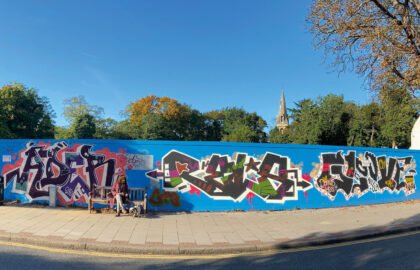Joshua Abbott is preparing to publish Modernism Beyond Metro-land, a book documenting 20th-century architecture in London’s suburbs. In the third of a series of extracts, the spotlight is on Snaresbrook’s Hermitage Court. Photo by Geoff Wilkinson
An art deco haven beside Woodford Road, Hermitage Court was one of many such speculative estates that appeared around the suburbs in the interwar years.
The road network around and into the capital grew during that time, with new bypass roads, like the Great Western and North Circular, making the car a more central feature in middle-class lives. This new network facilitated the spread of the suburbs, allowing developers to build further away from ‘town’, whilst advertising that central London was only a short(ish) drive away for both business and pleasure.
This expansion was aided by the growth of the Underground network, with the spread of the Piccadilly Line and particularly in north-east London, the Central Line, allowing those who couldn’t afford a private car to commute to the centre of the city for work.
Hermitage Court was designed by architect A Duckworth for the Suburban Real Estates company, one of many developers who sprang up in the 1930s to make the most of the comparative lack of planning controls of the era, spawning the so-called ‘ribbon developments’.
The estate was designed in an art deco style, bringing a slice of Hollywood glamour to those in suburban London. The deco details used around Hermitage Court could be found at similar schemes all around London; curved metal windows (often called suntrap), green pantiled roofs, decorative elements around the entrances and wooden doors with curved detailing.
The apartment block itself is arranged in an E-plan, built in brick and interspersed on the exterior with bands of render, giving the block a dynamic, horizontal emphasis. The estate was built on the site of two older mansions, the homes of the old gentry making way for the new speedy suburbanite.
The driveway is flanked by two pantiled pedestrian entrances leading you into the landscaped grounds. More deco details can be found along the outer perimeter wall, with streamlined, rendered go-faster fins indicating the age of the motor car. Of course, the speculative developers didn’t disappear come the postwar period, and a short walk along Woodford Road reveals a number of 1950s and 1960s apartment blocks in various shades of Modernist, but nothing with quite the same lean élan as Hermitage Court.
For more information on Modernism Beyond Metro-land and to pre-order a copy, visit wnstd.com/mbml





